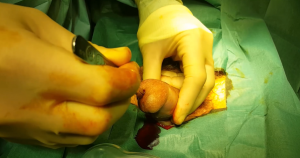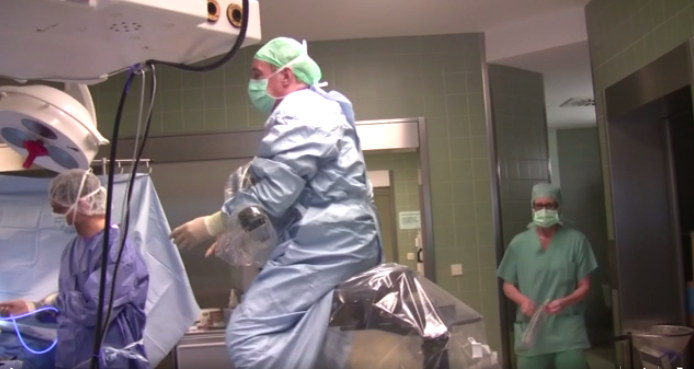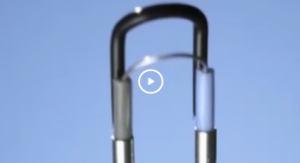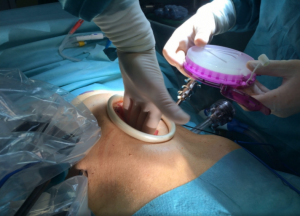Dual approach Laparoscopic Radical Nephrectomy with IVC thrombectomy videos
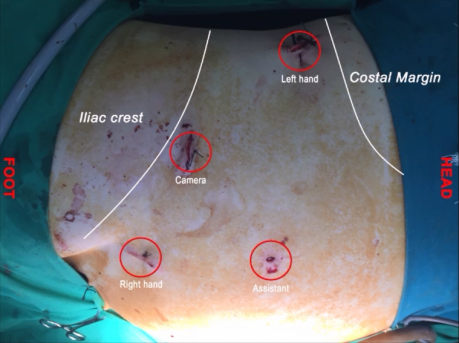
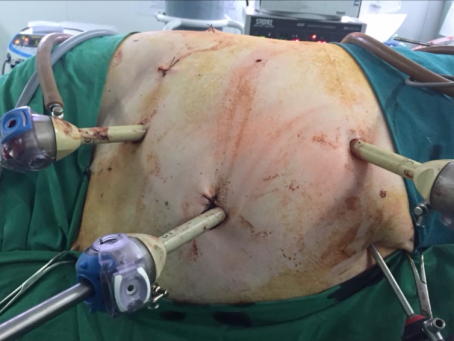
How do you reduce complications during a complete laparoscopic radical nephrectomy wih IVC thrombectomy? Via the dual-approach, of course. Why? Because the benefits include reduced blood flow towards the kidney, lower hemorrhagic incidents during IVC vessel loop placement, and lesser need for renal vein mobilization in the transperitoneal approach.
Check it out for yourself and enhance your technique! Watch the new Surgery in Motion School videos on Dual approach Laparoscopic Radical Nephrectomy with IVC thrombectomy performed by
Dr. Nicolae Crisan (RO).
In the following video-clips, Dr Alastair D Lamb and his colleagues from Edinburg Hospital Camebridge, demonstrate a complete sequence of how to differentiate between Ischaemic Priapism and High-Flow Priapism, from correct diagnosis to shunt surgery on a patient with confirmed low flow priapism. If not resolved on time, Ischaemic priapism (IP) can lead to corporal smooth muscle necrosis resulting in irreversible damage to the smooth muscle.
Watch and learn about the post-operative outcomes in which Alastair D Lamb discusses the advantages of T-shunts and his take-home key messages to colleague surgeons.
As you know, laparoscopic partial nephrectomy can be demanding due to limitations in posture, vision and instrumentation. New instruments and techniques are on the rise to improve these ergonomic limitations, but how beneficial are they when used during renorrhaphy?
In a series of highly-informative videos, Prof. Dr. Jens Rassweiler, together with Prof. Dr. Ali Serdar Gözen, Dr. Jan Klein and Dr. Alexandra Tschada, demonstrate a step-by-step simplification of an endoscopic suturing using an ergonomic surgical chair which has shown improved and promising results.
Watch and learn from the video series; from patient indication and operation set up, to tumor removal and nephropexy.
Watch and learn from this highly educational video-sequence by one of the leading international experts in this subject.
In the following video-clips, Prof Dr Jörg Raßler, demonstrates a complete sequence of incomplete enucleation by double loop, followed by bipolar resection of the prostate. The video-sequence is preceded by an introduction in which the indications, post-operative results and advice with regard to the learning curve are shown.
Additionally to the incomplete enucleation, Jörg Raßler also shows complete enucleation followed by morcellation and several modifications:
Enucleation by the sheath of the resectoscope
Enucleation by the button electrode (mushroom electrode)
Transurethral enucleation and resection of the prostate (TUER-P) is an attractive alternative over TURP and open prostatectomy, since the nodular adenoma can be completely removed through endoscopy and with promising pre- and post-operative outcomes.
Robotic-Assisted Kidney Transplantation (RAKT) shows promising results over open kidney transplantation in terms of complications, recovery time, and quality of vascular anastomosis? But RAKT requires a high level of expertise to optimise functional outcomes, such as patient and graft survival.
The learning curve for RAKT is demanding. Proctoring and careful patient selection are vital during the learning phase. Hence, the inception of a step-by-step video sequence via Surgery in Motion School.
Observe and know more about RAKT as leading experts in the field Dr. A. Breda, Dr. N. Doumerc (who performed the first RAKT in Europe in July, 2015), and Dr. R. Ahlawat demonstrate the procedure.

